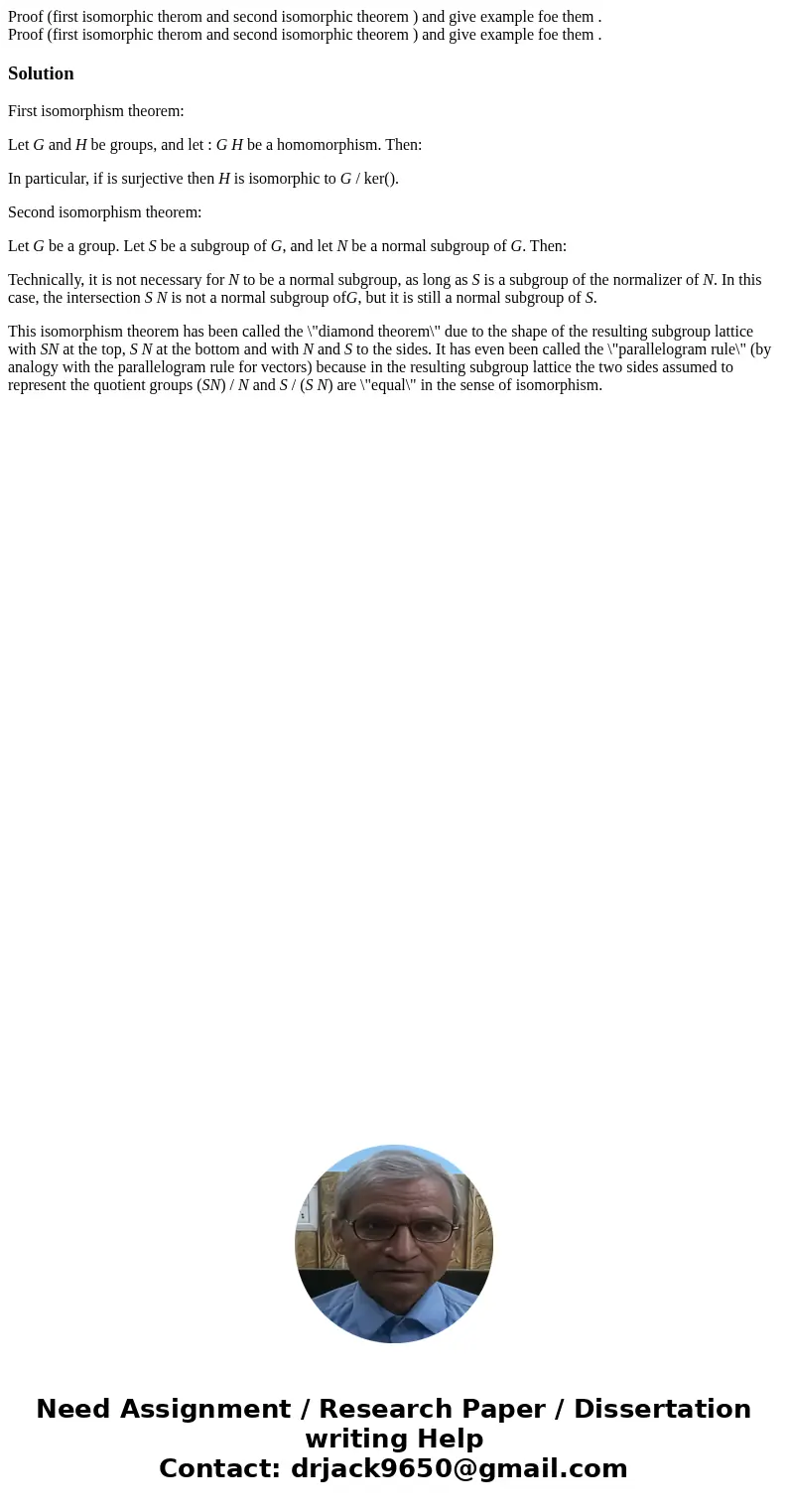Proof first isomorphic therom and second isomorphic theorem
Solution
First isomorphism theorem:
Let G and H be groups, and let : G H be a homomorphism. Then:
In particular, if is surjective then H is isomorphic to G / ker().
Second isomorphism theorem:
Let G be a group. Let S be a subgroup of G, and let N be a normal subgroup of G. Then:
Technically, it is not necessary for N to be a normal subgroup, as long as S is a subgroup of the normalizer of N. In this case, the intersection S N is not a normal subgroup ofG, but it is still a normal subgroup of S.
This isomorphism theorem has been called the \"diamond theorem\" due to the shape of the resulting subgroup lattice with SN at the top, S N at the bottom and with N and S to the sides. It has even been called the \"parallelogram rule\" (by analogy with the parallelogram rule for vectors) because in the resulting subgroup lattice the two sides assumed to represent the quotient groups (SN) / N and S / (S N) are \"equal\" in the sense of isomorphism.

 Homework Sourse
Homework Sourse